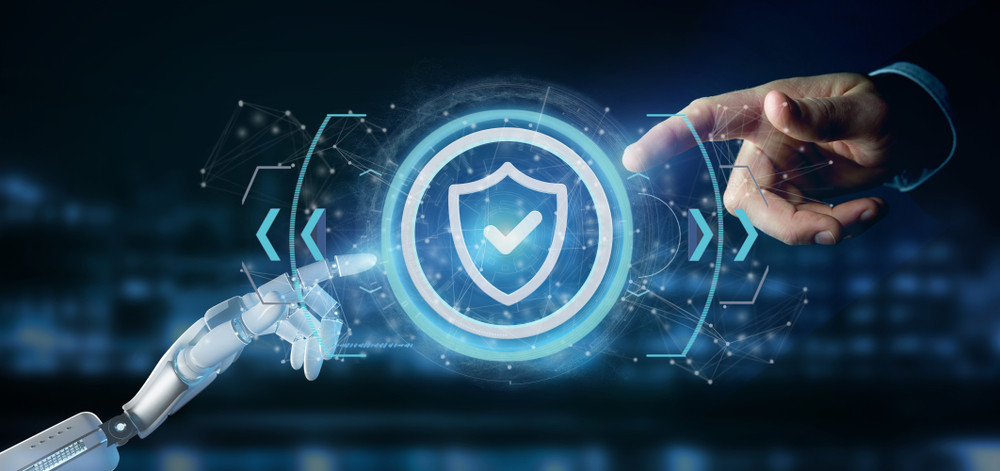In the field of artificial intelligence, one of the most notable recent advances has occurred in the field of generative AI. These AI tools have the ability to generate various types of content, such as text, images and video (and combinations of more than one type in the case of 'multimodal' tools). Mostly, these tools are designed for specific tasks or areas and, in this way, artificial intelligence in cybersecurity plays an important role.
The implementation of AI, especially machine learning solutions in security in apps and computer systems, has its origins in the late 1980s, with the implementation of the first anomaly detection systems. This was followed by the development of an intrusion detection system (IDS) in the 1990s. However, due to a lack of structured and clean data, as well as computing power limitations, its progression was delayed by a time.
Today, AI has grown to revolutionize the capabilities of modern technologies, the implementation of artificial intelligence-driven solutions in organizational cybersecurity has become a necessity. Learning how to do security tests on apps and other systems is essential, so we recommend approaching specialists on the subject such as Veracode in Spanish and Codster.
The growing importance of artificial intelligence in cybersecurity
The protection of information against the risks associated with the use of computer systems and networks constitutes the core of the field of cybersecurity. In today's information culture, both individuals and businesses find themselves more vulnerable than ever to a variety of threats, ranging from ransomware and malware attacks to data theft and other forms of cybercrime. This reality underscores the growing importance of artificial intelligence in cybersecurity, as it is essential to avoid privacy violations, financial losses and data breaches.
The impact of artificial intelligence on cybersecurity
Cybersecurity is deeply influenced by artificial intelligence (AI), which provides new tools for the identification, analysis and prevention of online threats. AI is capable of evaluating large volumes of data, detecting anomalies, and identifying suspicious patterns in the realm of threat detection, making it easier to identify sophisticated or unidentified attacks. In addition to effectively analyzing and categorizing network data, identifying malware and predicting potential vulnerabilities, artificial intelligence also helps defend against cyberattacks.
Successful applications of artificial intelligence in cybersecurity include neural network-based algorithms for detecting phishing attacks and machine learning systems that can automatically identify new malware variants. However, the use of artificial intelligence in cybersecurity can also come with risks and challenges, such as the potential for targeted attacks on AI systems or the generation of false positives.
To effectively protect against cyberattacks, it is crucial that both artificial intelligence and cybersecurity innovation continue to advance.
Specific tasks performed by Artificial Intelligence in cybersecurity
Currently, numerous cybersecurity tasks are carried out by artificial intelligence, which improves the effectiveness and precision of protection mechanisms as demonstrated by Codster and Veracode. Below are some examples of these specific tasks:
- Automatic vulnerability detection: Artificial intelligence can scan code and examine applications to identify potential vulnerabilities. By automatically detecting weaknesses in the code or incorrect configurations, it helps in the implementation of necessary fixes and contributes to the early identification and prevention of cyberattacks.
- Attack prediction: By analyzing attack data, including attack signatures and characteristics, AI can predict possible future attacks. This allows containment measures to be applied against possible threats in a timely manner.
- Incident response automation: Cyber incident planning and response can be automated using artificial intelligence. AI can automatically evaluate event data, classify it based on severity, and take necessary actions, such as blocking suspicious traffic or alerting a response. The information generated by AI can help in building highly optimized cyber incident response plans for the organization.
These examples illustrate how artificial intelligence in cybersecurity can automate procedures, improve their effectiveness, accelerate response to threats and ensure more effective protection of information.

What are the cybersecurity risks associated with the use of artificial intelligence?
Generative AI, and especially large-scale language models (LLM), stand out for their impressive ability to produce a wide variety of compelling content in various situations.
However, the quality of the content generated by these tools depends largely on the data on which they are based., and the technology presents some significant flaws and artificial intelligence in cybersecurity, including:
- The possibility of making mistakes and presenting incorrect information as true facts, a phenomenon known as 'AI hallucination'.
- The tendency to be biased and often respond naively to leading questions.
- The susceptibility to being manipulated to create harmful content and the propensity to suffer 'cue injection attacks'.
- The potential corruption by altering the data used to train the model, a tactic known as 'data poisoning'.
Cue injection attacks are one of the most commonly reported vulnerabilities in large-scale language models. These attacks occur when a malicious individual introduces information designed to influence the model's behavior in an unwanted way. This may involve generating offensive content, revealing sensitive information, or causing unintended consequences on systems that accept unverified input.
On the other hand, data poisoning attacks occur when an attacker manipulates the data used to train an AI model with the aim of producing undesirable results, either in terms of security or bias. As large-scale language models, in particular, are increasingly used to transmit data to third-party applications and services, the risks associated with these types of attacks will increase, as detailed in the NCSC blog 'Considerations for the security of AI systems'.
To improve the relationship of artificial intelligence in cybersecurity in your company, it is necessary to rely on the best providers of analysis of vulnerabilities in applications that can be prevented with the support of Veracode, its analysis includes static analysis of source code, dynamic analysis of applications, software composition analysis, mobile software analysis, integration and automation tools, and reports and dashboards, you can request a consultancy with Codster to solve your doubts about it.






